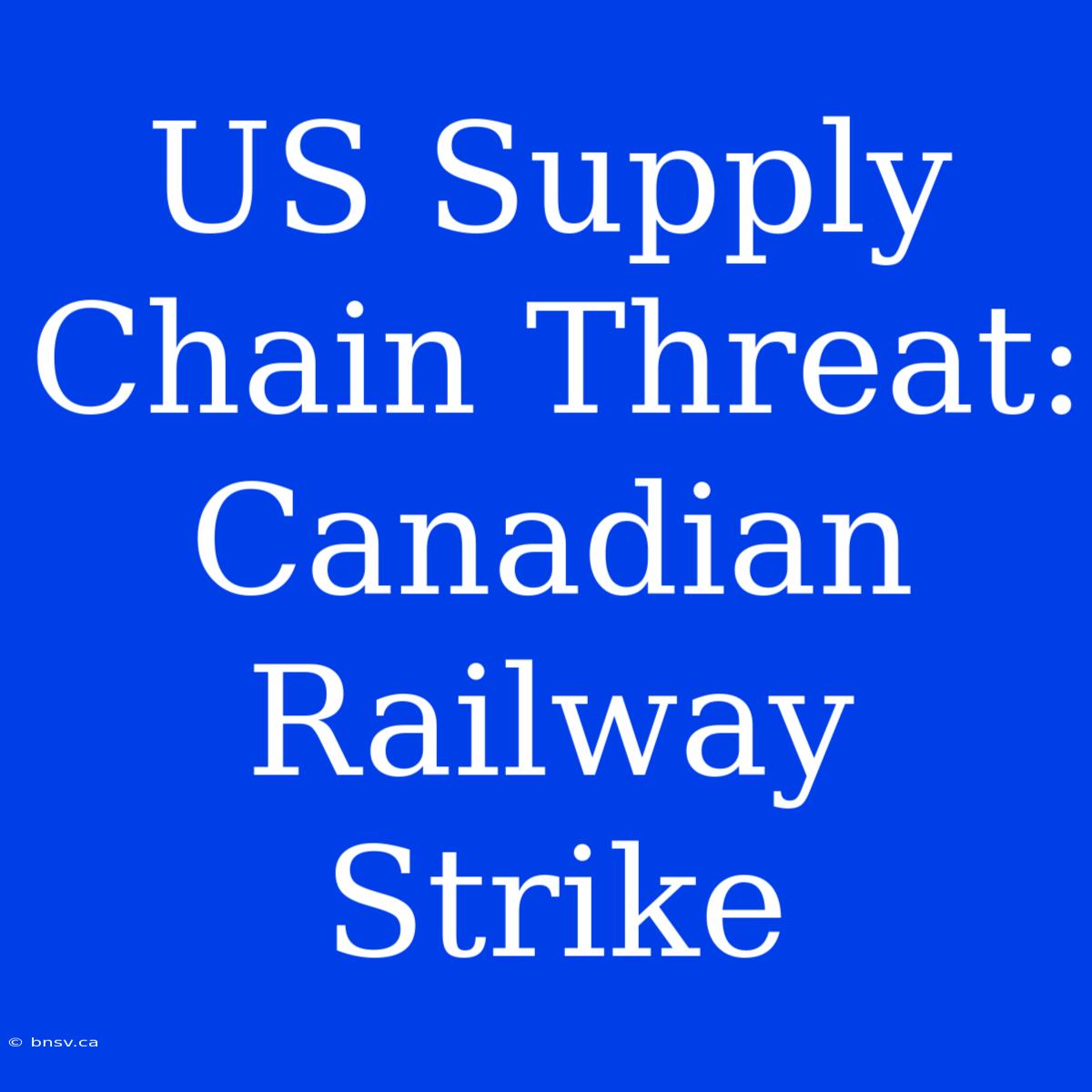US Supply Chain Threat: The Looming Canadian Railway Strike and Its Impact
Editor's Note: With negotiations for a new contract between Canadian Pacific Railway (CP) and its workers at an impasse, the threat of a nationwide railway strike looms large, potentially disrupting the flow of goods across North America. This article explores the potential impact of a strike on the US supply chain and examines the complex challenges and implications.
Analysis: This guide provides an in-depth analysis of the Canadian railway strike's potential impact on the US supply chain, examining its complexities and offering practical insights for businesses and consumers alike. This analysis draws on recent reports from industry experts, government agencies, and news sources to provide a comprehensive understanding of this critical issue.
The Stakes: A Major Disruption
The Canadian railway system plays a vital role in transporting goods between the US and Canada, serving as a critical artery for various industries, including automotive, agriculture, and manufacturing. A strike would halt this crucial flow of goods, leading to:
- Supply Chain Disruptions: Significant delays in shipments of raw materials, finished products, and essential goods.
- Production Shortages: Manufacturing plants and businesses reliant on Canadian rail transportation might face production halts due to material shortages.
- Price Increases: Increased transportation costs due to alternative modes of transport or potential stockpiling, leading to higher prices for consumers.
- Economic Impact: A slowdown in economic activity, potential job losses, and a ripple effect across industries.
The Impact on Specific Sectors
- Automotive: The automotive industry relies heavily on Canadian rail transportation for parts and finished vehicles. A strike could significantly impact production lines and lead to delays in vehicle deliveries.
- Agriculture: Canadian agriculture relies on rail transport for moving grains, fertilizers, and other inputs. A strike would disrupt the flow of these essential goods, impacting farmers and the broader food supply chain.
- Manufacturing: Many US manufacturers rely on Canadian rail for transporting raw materials and finished products. A strike could cause disruptions to manufacturing processes, resulting in production delays and higher costs.
Navigating the Challenges
- Alternative Transportation: Businesses may explore alternatives like trucking or air freight to mitigate the impact of a strike, but these options are often more expensive and less efficient.
- Inventory Management: Businesses may need to increase their inventories to buffer against potential shortages, but this can lead to higher storage costs and potential obsolescence.
- Communication and Collaboration: Effective communication and collaboration between businesses and their suppliers are crucial to navigate the challenges of a strike and minimize disruptions.
FAQs
- What are the key demands of the workers? The workers are seeking improved wages, better benefits, and protections against excessive workloads.
- What is the likelihood of a strike? The likelihood of a strike is difficult to predict, as negotiations are ongoing. However, the potential for a strike remains high.
- What steps are being taken to avoid a strike? Government officials, industry leaders, and stakeholders are actively working to facilitate a negotiated settlement between CP and its workers.
- How can businesses prepare for a potential strike? Businesses can prepare by reviewing their supply chains, exploring alternative transportation options, and strengthening communication with their suppliers.
- What is the government's role in this situation? The Canadian government is actively involved in facilitating negotiations and may implement measures to minimize the economic impact of a strike.
Tips for Businesses
- Assess your supply chain: Identify all points where Canadian rail transport plays a role and assess the potential impact of a strike.
- Explore alternative transportation options: Consider trucking, air freight, or other modes of transport to maintain supply chain continuity.
- Increase inventory levels: Stockpile essential materials and finished goods to buffer against potential shortages.
- Communicate with suppliers: Keep your suppliers informed about potential disruptions and work collaboratively to mitigate impacts.
- Stay informed: Monitor news sources and official announcements from government agencies to stay up-to-date on the situation.
Summary (Resumen): The potential for a Canadian railway strike poses a significant threat to the US supply chain, impacting various industries and consumers. This analysis highlights the potential disruptions, sector-specific impacts, and strategies for navigating the challenges.
Closing Message (Mensaje de Cierre): The Canadian railway strike situation emphasizes the importance of robust and resilient supply chains. Businesses and policymakers should prioritize building flexible and diversified supply chains, exploring alternative transportation modes, and investing in infrastructure to mitigate future disruptions.

